Choosing the right Rolfer is crucial for athletes seeking peak performance. This checklist provides essential criteria to ensure optimal results from Rolfing sessions. Athletes must prioritize experience, qualifications, and specialization when selecting a Rolfer. Understanding the practitioner’s background, certifications, and expertise in sports-related issues is paramount. Assessing compatibility with the Rolfer’s approach and techniques is vital for successful outcomes. By following this checklist diligently, athletes can make an informed decision that aligns with their specific needs and goals.
Understanding Rolfing
Rolfing stands out as a unique form of soft tissue work that offers benefits surpassing traditional massage techniques. This technique involves utilizing manual therapy to target imbalances resulting from repetitive movements during intense training sessions, such as running. By focusing on specific areas of tension through deep tissue work, Rolfing enhances flexibility and aids in improving overall performance.
Incorporating Rolfing into an athlete’s routine can lead to various advantages. Athletes, including students, can experience increased flexibility and range of motion, aiding in better movement execution during training and competitions. Rolfing plays a crucial role in muscle recovery post-workout, ensuring athletes maintain optimal physical condition for their next session. Moreover, this practice contributes to an overall enhancement in athletic performance by addressing underlying issues within the body.
Rolfing proves to be highly beneficial for athletes seeking to enhance their performance on the track or trails. Through targeted sessions, individuals can improve running efficiency by correcting imbalances and enhancing body alignment. Furthermore, regular Rolfing sessions help reduce the risk of injuries commonly associated with running activities while simultaneously boosting endurance levels for prolonged training periods by enhancing mobility.
Athletes looking to elevate their athletic performance can find significant value in incorporating Rolfing into their regimen. This practice optimizes muscle function by releasing tension and promoting proper alignment throughout the body. As a result, athletes may experience an increase in power output during explosive movements and exercises requiring strength and speed. Moreover, Rolfing enhances mobility, agility levels, and speed capabilities essential for excelling in various sports disciplines.
Foam Roller Types
Different types of foam rollers cater to various mobility needs in foam rolling techniques. Soft rollers are ideal for beginners or individuals with sensitive muscles, providing a gentle approach to soft tissue work. When choosing a foam roller, consider the level of firmness based on your tolerance for pressure during rolling sessions. Experiment with different foam roller types to target specific areas of tight muscles, and trigger points, and improve flexibility post-training sessions.
Soft Rollers
- Ideal for beginners or individuals with lower pain tolerance
- Provide gentle muscle release
- Suitable for light muscle tension relief
Firm Rollers
- Target deeper muscle layers
- Effective for releasing tight knots
- Recommended for experienced athletes
Grid Rollers
- Offer a versatile surface for different muscle groups
- Provide targeted massage therapy
- Enhance blood circulation
Deep Tissue Rollers
- Reach deep muscle layers for intense release
- Alleviate chronic muscle tightness
- Improve overall muscle health
Vibrating Rollers
- Provide additional muscle relaxation through vibration.
- Enhance blood flow and circulation.
- Accelerate muscle recovery.
Foam Rolling Techniques
Practicing foam rolling regularly can significantly benefit athletes by improving flexibility and reducing muscle soreness post-training. Using a soft roller for gentle soft tissue work is crucial for targeting tight muscles and trigger points effectively. Incorporating foam rolling into pre-workout routines enhances muscle activation and performance during training sessions.
Experimenting with various rolling strategies and skills is essential to discover what works best for individual bodies. Whether it’s for relaxation, meditation, or muscle recovery, finding the right approach can make a significant difference in overall athletic performance.
Correct Usage
- Maintain proper form during rolling sessions
- Apply appropriate pressure based on comfort level
- Focus on slow and controlled movements
Muscle Group Targeting
When athletes are looking for a Rolfer, it’s important to find someone who can tailor the rolling techniques to target specific muscle groups. This means that the Rolfer will pay close attention to the different muscles in your body and use specific techniques to address any issues or imbalances. For example, if you have tight hamstrings or calves from running, the Rolfer can use techniques that specifically target those areas to help improve flexibility and reduce the risk of injury. By focusing on enhancing overall muscle balance and function, athletes can optimize their training outcomes and perform at their best during competitions and workouts. It’s like giving your muscles a personalized workout that helps them function better and support your athletic performance.
Key Muscle Groups
Athletes often experience tightness in muscle groups crucial for performance, including the quadriceps, hamstrings, calves, and hip flexors. To address this, developing skills to identify trigger points within these areas is essential for releasing tension and enhancing flexibility.
Using tools like foam rollers, massage balls, or resistance bands can effectively target specific areas of tightness through soft tissue work. By incorporating regular soft tissue work post-workout sessions, athletes can dedicate 10-15 minutes per muscle group to improve recovery and prevent injuries.
Calves Exercises
- Release tension in calf muscles by performing stretches and using massage tools.
- Enhance ankle flexibility through exercises targeting the calf muscles.
- Reduce the risk of calf-related injuries by maintaining optimal calf muscle health.
IT Band Workouts
- Alleviate tightness in the IT band with targeted stretching and foam rolling techniques.
- Improve hip stability by engaging in exercises that strengthen the IT band.
- Decrease the likelihood of IT band syndrome by incorporating regular workouts focusing on this area.
Quadriceps Strengthening
- Strengthen and enhance flexibility in quadriceps muscles through targeted exercises like squats and lunges.
- Boost knee joint stability by building strength in the quads.
- Increase quad muscle endurance to support prolonged athletic performance.
Hamstrings Training
- Improve hamstring flexibility and strength through stretching routines tailored to this muscle group.
- Prevent hamstring strains by regularly engaging in exercises that target the hamstrings’ range of motion.
- Reduce overall hamstring tightness with a combination of strengthening and stretching workouts.
Additional Muscle Focus
Identifying tight muscles is crucial for athletes. Through a detailed assessment, specific areas needing attention can be pinpointed. This allows for targeted interventions to address muscle imbalances effectively.
Incorporating soft tissue work into an athlete’s routine is essential. Techniques such as massage, foam rolling, and manual therapy can help alleviate muscle soreness and enhance flexibility. These practices aid in maintaining optimal muscle health and reducing the risk of injuries during intense training sessions.
During training sessions, implementing trigger point techniques can be highly beneficial. By targeting these specific points of tension within the muscles, athletes can release tightness and improve overall muscle performance. This approach enhances mobility and ensures muscles are functioning at their peak capacity.
To complement an athlete’s training objectives and skills, utilizing a diverse range of strategies is key. From engaging in soft roller exercises to incorporating meditation practices, athletes can enhance their mental focus and physical performance simultaneously. These holistic approaches contribute to achieving peak athletic performance while promoting overall well-being.
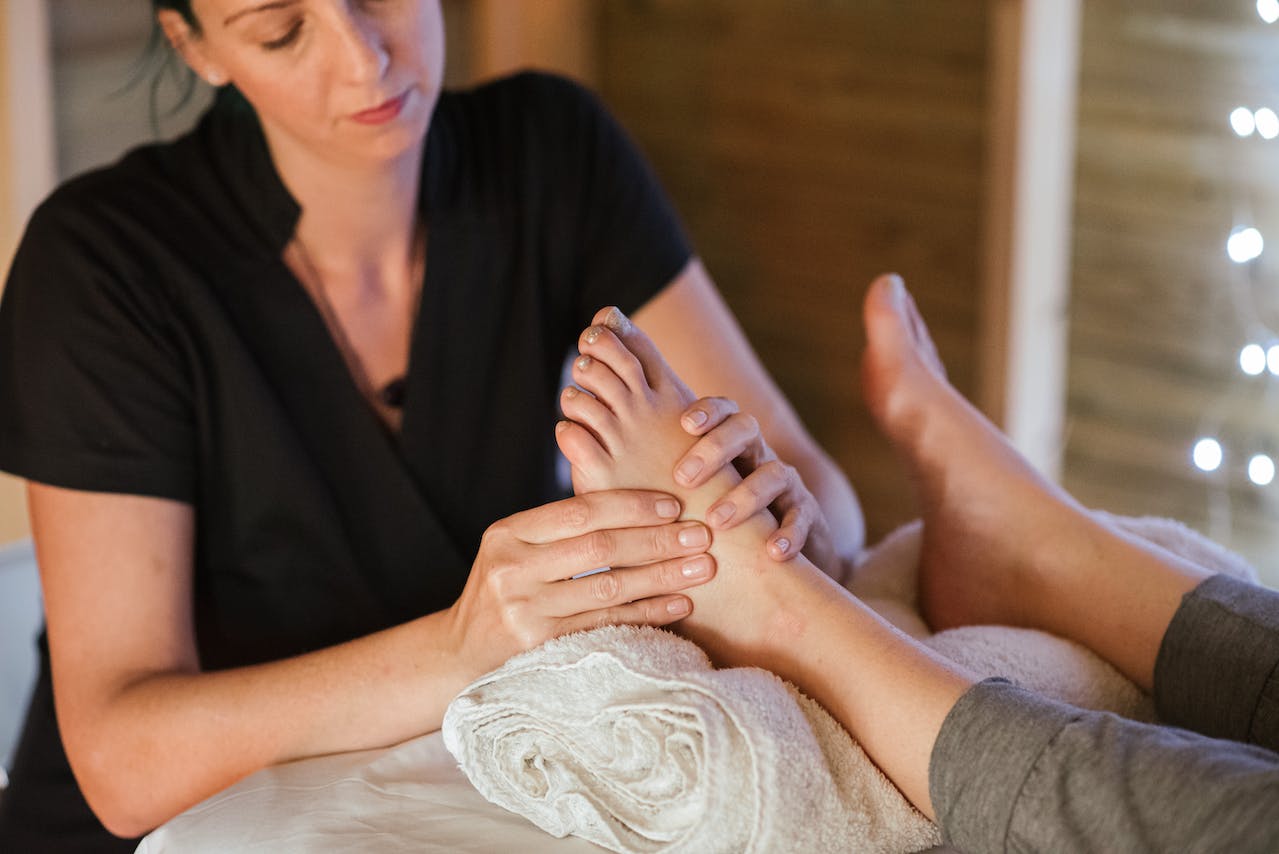
Choosing the Right Rolfing Professional
When selecting a Rolfing practitioner for athletes, it is crucial to assess their experience in working with athletes. Understanding an athlete’s specific needs during training sessions is paramount for effective treatment.
Ask about the techniques and strategies employed by the Rolfing professional. Inquire about soft tissue work, manual therapy, and foam rolling methods utilized to enhance an athlete’s flexibility, performance, and overall health.
Inquire into the courses, certifications, or specialized training completed by the Rolfing professional. Ensuring they have acquired the necessary skills and expertise is essential for providing athletes with effective treatment solutions.
Discuss the potential benefits of Rolfing for athletes with the practitioner. Improved recovery time, injury prevention, enhanced body awareness, and mental focus – all factors that can significantly impact an athlete’s performance and well-being.
Credentials Check
- Verify Rolfing certification
- Ensure experience in sports-related Rolfing
- Confirm positive client feedback
Specialization in Athletics
- Seek expertise in working with athletes
- Prioritize knowledge of sports-related muscle needs
- Ensure tailored sessions for athletic performance enhancement
Athlete Testimonials
- Gain insights from benefited athletes
- Understand firsthand experiences/results
- Evaluate credibility through athlete feedback
Preparing for Rolfing Sessions
Incorporate foam rolling into your pre-Rolfing routine to help loosen tight muscles and enhance the effectiveness of the session. Prioritize scheduling Rolfing sessions after lighter training days to allow your body to fully benefit from the soft tissue work without added strain. Consider using a soft roller at home between Rolfing sessions to maintain the benefits of the manual therapy and support your body’s recovery process. Practice meditation or deep breathing exercises before your Rolfing session to help relax your mind and body, optimizing the impact of the hands-on work on your soft tissues.
What to Expect
Get ready for a unique experience when you choose Rolfing sessions! Each session is all about you and your body’s needs. The Rolfer will focus on the areas that need attention the most, like tight muscles or limited mobility. By using special techniques, they can help release tension in your muscles, making you feel better and move more easily. While some techniques might feel a bit uncomfortable at first, the benefits of Rolfing are worth it in the long run. You’ll notice improvements in your posture, flexibility, and even a reduction in any pain you may be feeling. So, don’t worry if it feels a bit strange at first – it’s all part of the process to help you become a better athlete!
Session Frequency
When it comes to choosing the right Rolfer, it’s important to consider how often you should schedule your sessions. The frequency of your Rolfing sessions will depend on how intense your training is. If you’re engaging in high-intensity workouts or sports activities regularly, you may need more frequent Rolfing sessions to help maintain your body’s optimal condition. Regular Rolfing sessions can be beneficial for athletes in various ways. They can help address any muscular imbalances that may arise from repetitive movements or overuse during training. By consistently attending Rolfing sessions, athletes can also enhance their recovery process after intense workouts, allowing them to bounce back quicker and perform at their best. It’s crucial to pay attention to your body’s signals when determining how often you should schedule Rolfing sessions. If you notice that certain muscles are taking longer to recover or if you’re experiencing discomfort or tightness in specific areas, it may be a sign that you need more frequent manual therapy through Rolfing. Listening to your body and adjusting your session frequency accordingly can help prevent injuries and improve overall performance in the long run.
Integrating Rolfing with Training
Athletes can enhance their flexibility by incorporating Rolfing techniques into their regular training sessions. This integration helps improve soft tissue health and supports the body’s natural alignment for optimal performance during workouts and competitions. Combining foam rolling and soft tissue work with Rolfing offers a comprehensive approach to athlete recovery and performance enhancement.
During Rolfing sessions, athletes can benefit from integrating meditation and manual therapy techniques. These practices promote mental focus, relaxation, and overall athletic performance improvement. By implementing Rolfing alongside workout routines, athletes can address specific areas of tension effectively.
Before Training Sessions
- Incorporate Rolfing as part of the pre-training warm-up routine.
- Prepare muscles to achieve optimal performance levels.
- Enhance muscle flexibility and range of motion before engaging in intense workouts.
Post-Training Recovery
Athletes can utilize Rolfing for post-workout muscle recovery to accelerate the healing process. This practice aids in muscle relaxation, tension release, and overall recovery after strenuous training sessions.
Summary
In conclusion, selecting the right Rolfer is crucial for athletes seeking to optimize their performance and prevent injuries. Understanding Rolfing, identifying key muscle groups, and integrating sessions with training are essential steps in this process. By choosing a qualified professional and preparing adequately for sessions, athletes can experience the full benefits of Rolfing in enhancing flexibility, reducing muscle tension, and improving overall well-being. Remember, a well-informed approach to selecting a Rolfer can make a significant difference in an athlete’s physical condition and performance.
Frequently Asked Questions
1. Is Rolfing suitable for all athletes?
Rolfing can benefit various athletes by improving flexibility, posture, and performance. However, individuals with certain medical conditions should consult their healthcare provider before undergoing Rolfing to ensure it is safe for them.
2. How can an athlete prepare for a Rolfing session?
Athletes preparing for a Rolfing session should hydrate well, wear comfortable clothing, and communicate any specific concerns or goals with their Rolfer. Being mentally prepared and open to the process can enhance the overall experience.
3. What are the key differences between various foam roller types?
Foam rollers are like magic wands for your muscles! They come in all shapes and sizes, but did you know that they also come in different densities and textures? This is super important because it affects how intense your massage will be. If you’re just starting out or if your muscles are a bit sensitive, you might want to go for a softer foam roller. These gentle rollers are great for beginners because they provide a more delicate touch.
On the other hand, if you’re looking for some serious muscle relief, then a firmer foam roller is the way to go! These bad boys can get deep into your tissues and work out those knots and tight spots. So, when choosing a foam roller, think about how intense you want your massage to be and pick the density and texture that suits your needs best!
4. Can Rolfing help in injury prevention for athletes?
Rolfing is a type of bodywork that focuses on aligning the body, reducing tension in muscles, and improving how well you can move. Athletes often choose to work with Rolfers because it can help prevent injuries and keep them performing at their best. When Rolfers work with athletes, they pay attention to any imbalances in the body. These imbalances can happen when certain muscles are stronger or tighter than others, which can affect how well you move and increase the risk of getting hurt.
By helping athletes become more aware of their bodies and how they move, Rolfers can teach them how to maintain their bodies in the best possible shape for their sport. This can include exercises or stretches to do at home, tips for better posture during training, or even suggestions for changes in how they move during their sport. By working with a Rolfer regularly, athletes can stay on top of any issues before they become bigger problems that could keep them from playing or competing.
5. How frequently should an athlete consider integrating Rolfing into their training routine?
The frequency of Rolfing sessions may vary based on individual needs and goals. Some athletes benefit from regular sessions as part of their training regimen while others may schedule sessions based on recovery needs or competition schedules. Consult with a Rolfer to determine an appropriate schedule tailored to your specific requirements.
Unlocking Athletic Excellence with Rolfing: Elevate Your Performance with MedicinEvolution’s Cutting-Edge Strategy!
Are you an athlete contending with sports injuries, chronic pain, or aiming to boost your overall performance? MedicinEvolution is at the cutting edge of incorporating Rolfing into sports recovery and performance enhancement, guiding athletes to peak health and performance. By harnessing the principles of Rolfing, MedicinEvolution targets the root causes of your discomfort, facilitating a natural and comprehensive healing journey. Say farewell to the hurdles of sports injuries, chronic pain, and the repetitive strain that hampers your athletic pursuits—as MedicinEvolution caters to the unique demands of your body, steering you towards profound relief and recovery. Their expertly tailored Rolfing sessions are devised to transition you away from the pain and limitations that hinder your athletic potential.
If you’re an athlete struggling with enduring pain, injuries, or barriers to achieving your peak performance, MedicinEvolution’s specialized approach, rooted in the synergy of Rolfing and sports recovery, is meticulously designed for you. Don’t let the challenges of injuries or chronic pain define the boundaries of your athletic capabilities—make the move and book your consultation with MedicinEvolution today! Embark on a path with their Rolfing-focused interventions and start progressing towards a more pain-free, resilient, and enhanced athletic life. Your body and performance, freed from the constraints of discomfort, will thank you for the remarkable transformation!

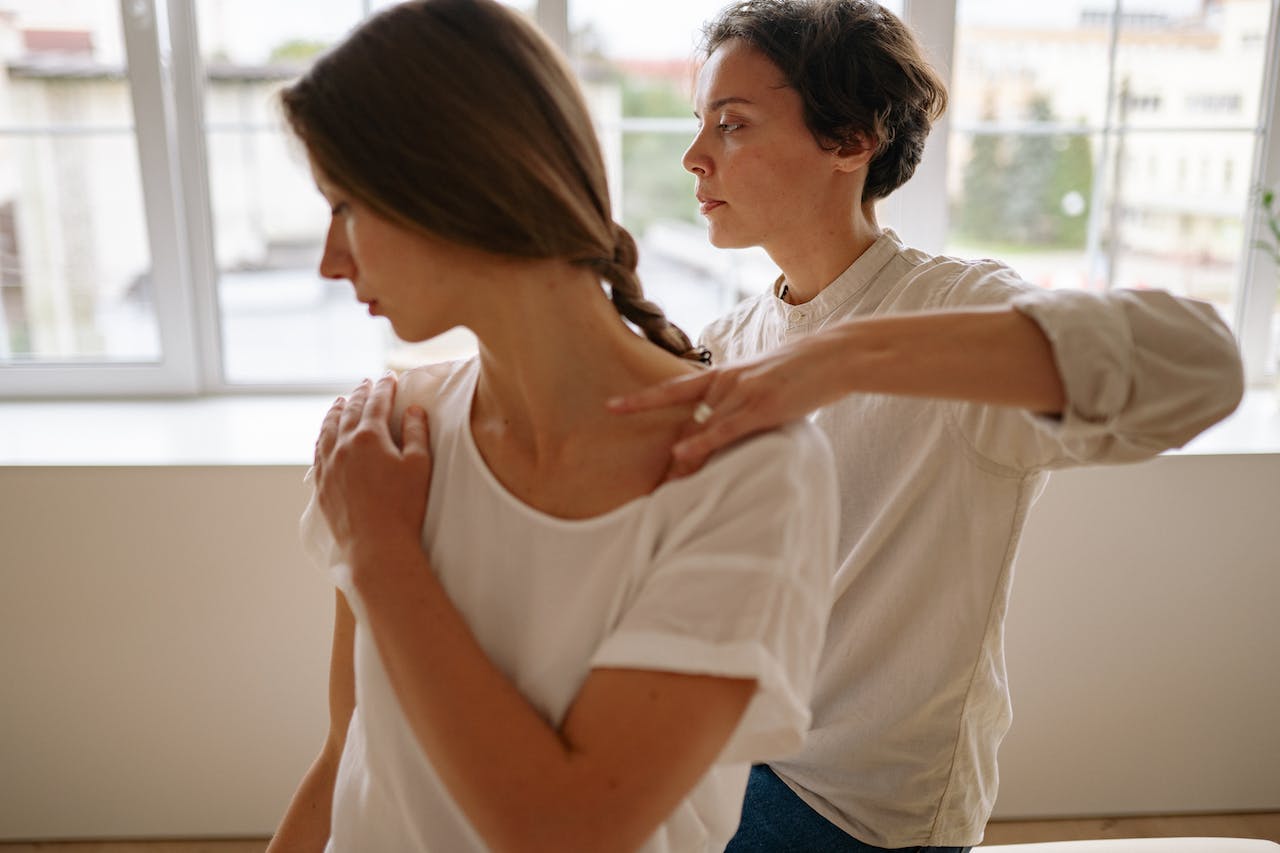

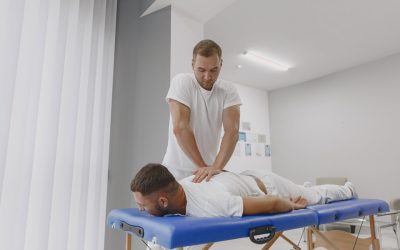
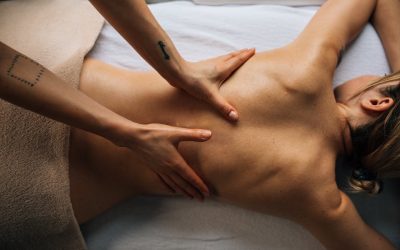
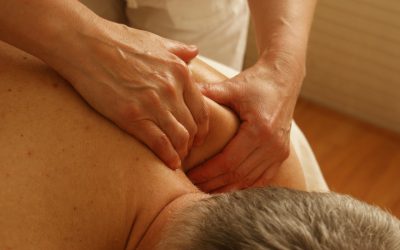
0 Comments